Is Turkey a good place to visit? The answer’s obvious. This country mixes ancient history with stunning landscapes in ways that stick with you. Imagine beaches with perfect sunshine just a drive away from snow-covered peaks. Picture lively markets full of spices next to quiet villages where time moves slowly.
Straddling Europe and Asia, Turkey keeps surprising you at every turn.
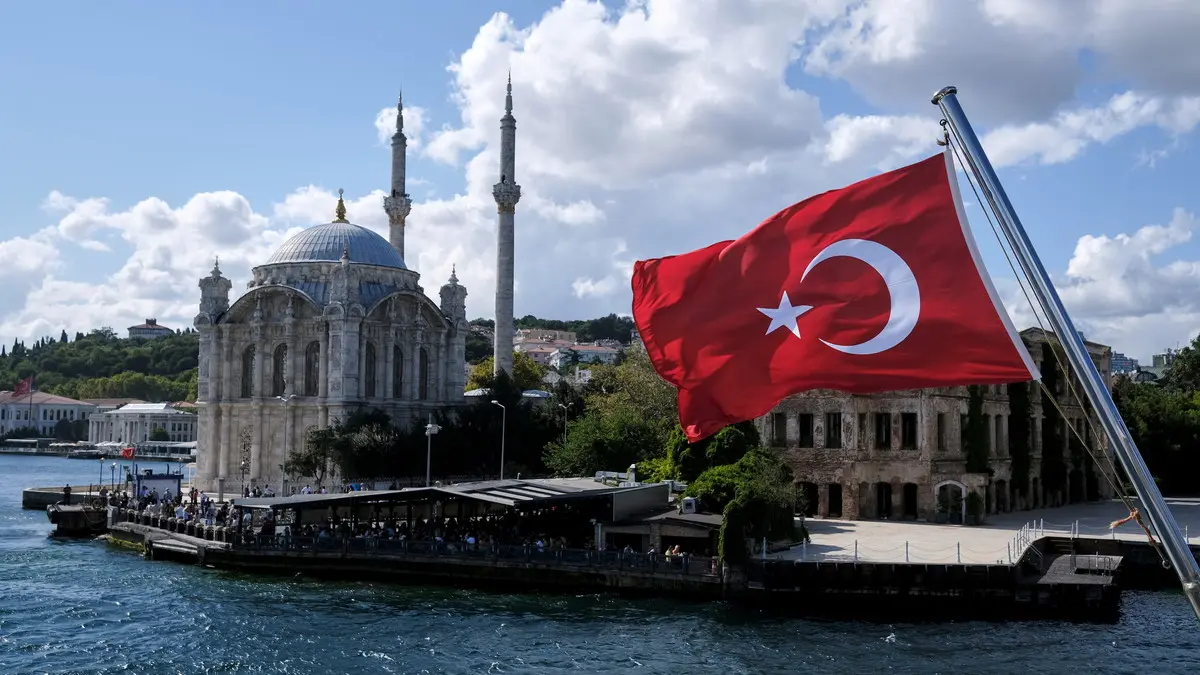
Istanbul: Where History Meets Modern Vibrance
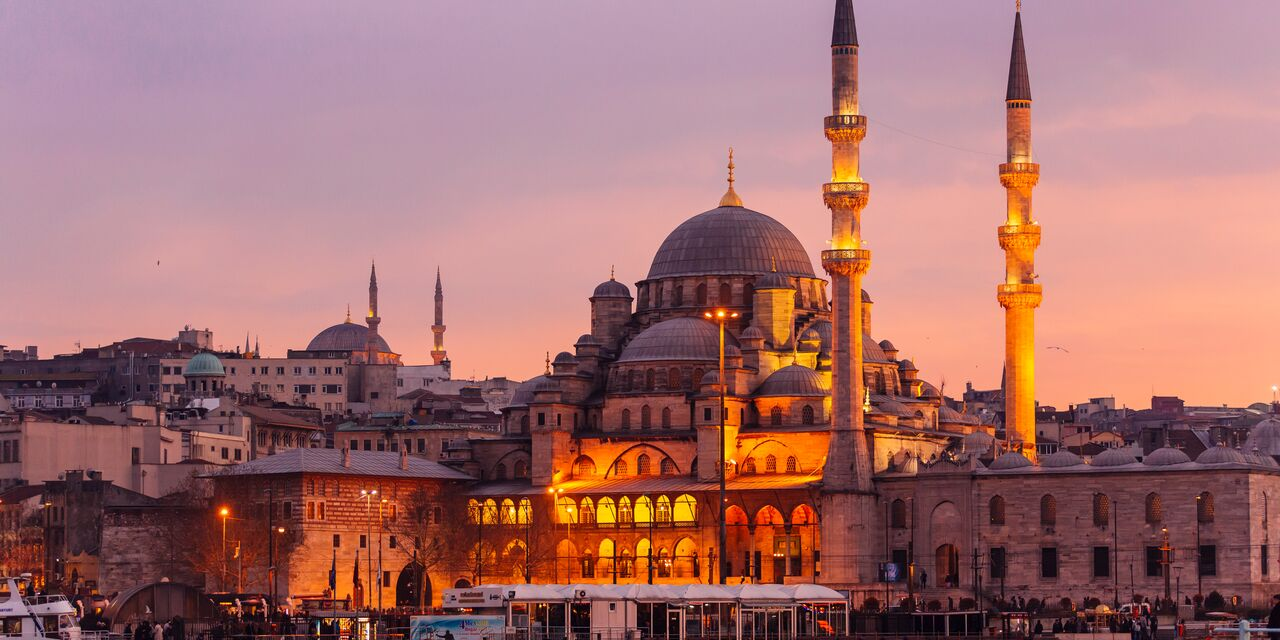
Istanbul’s skyline? Think domes and minarets. Underneath, streets buzz with energy that just doesn’t quit. Head to Sultanahmet, and you’ll find some of the most beautiful places in Turkey packed side by side:
- Blue Mosque, with six slender minarets and walls covered in 20,000 hand-painted tiles;
- Hagia Sophia, flipping from church to mosque to museum and back again;
- Topkapı Palace, where Ottoman rulers called the shots for four centuries;
Cross over to Beyoğlu, and everything changes. Istiklal Avenue has modern cafés and boutiques, while Çukurcuma’s dusty shops hide vintage gems. It’s a whole different vibe—sharp, lively, impossible to ignore.
Then there’s the Grand Bazaar. Seriously, don’t skip it. Maze of 4,000 stalls sells everything: rugs, lamps, spices, you name it. Haggle like it’s your job, sip tea with sellers—this is Istanbul uncut, no filter.
Eastern Black Sea & Kaçkar Mountains: A Paradise for Nature Lovers
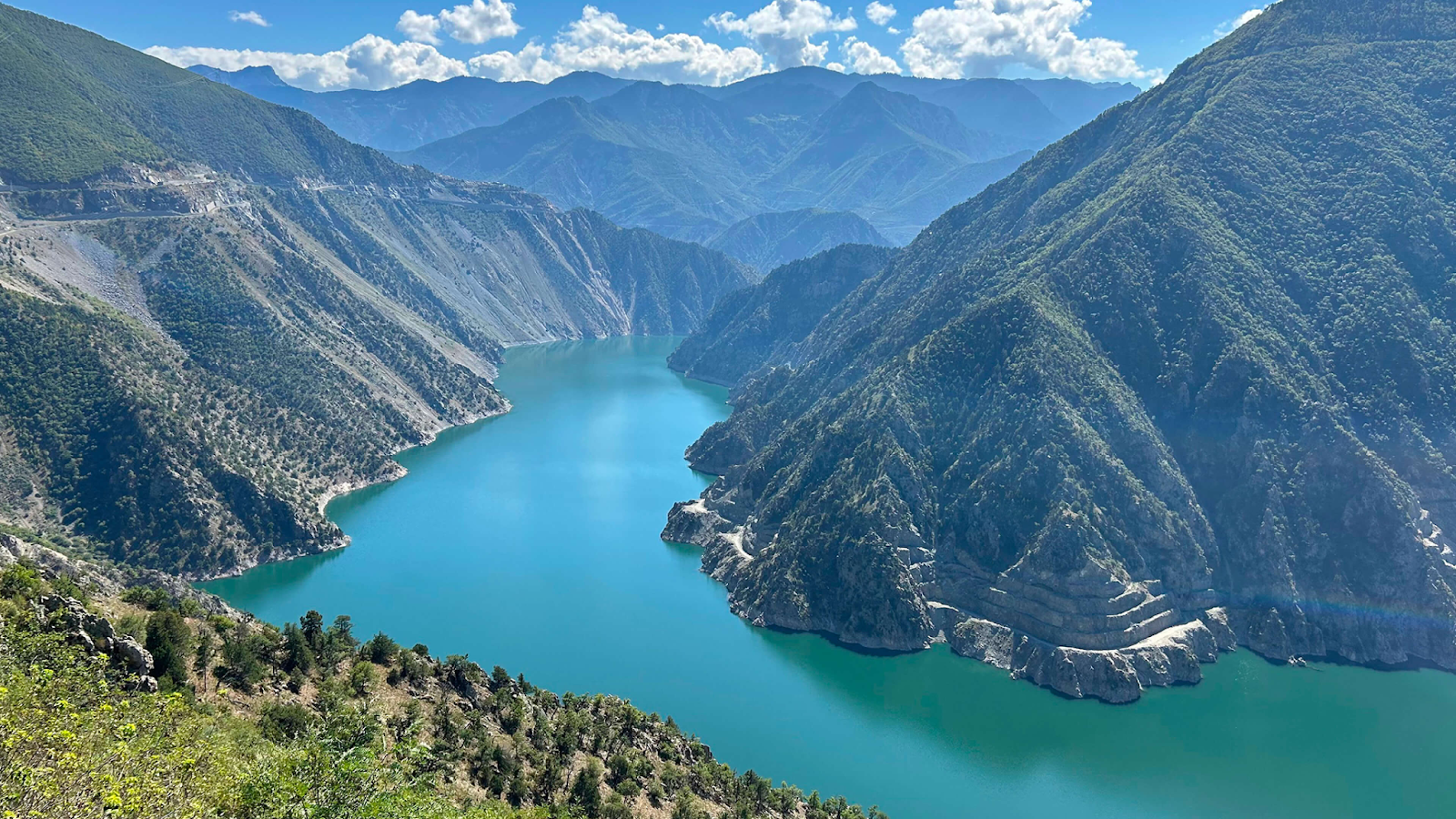
Eastern Turkey’s Black Sea coast hides green landscapes that rank among the best places in Turkey for quiet nature escapes. Kaçkar Mountains steal the show with meadows exploding in summer blooms, plus villages of wooden houses stacked on hillsides. Trails here? They match Alpine routes in drama but skip the crowds.
Ayder Plateau makes a smart hub for adventures. Expect steamy hot springs to unwind, hearty meals starring cornbread and local cheeses, plus paths ranging from easy strolls to tough climbs.
Venture east into Hemşin Valley, where old stone bridges cross frothy rivers and centuries-old churches peek through forests. Days here stretch longer, quieter.
Don’t miss the lower slopes blanketed in tea fields—rows of vibrant green climbing hillsides. Pop into a roadside çay shack for strong tea served in tulip glasses, with mountain panoramas as your backdrop.
Turquoise Coast: Türkiye’s Stunning Riviera of Blue Waters
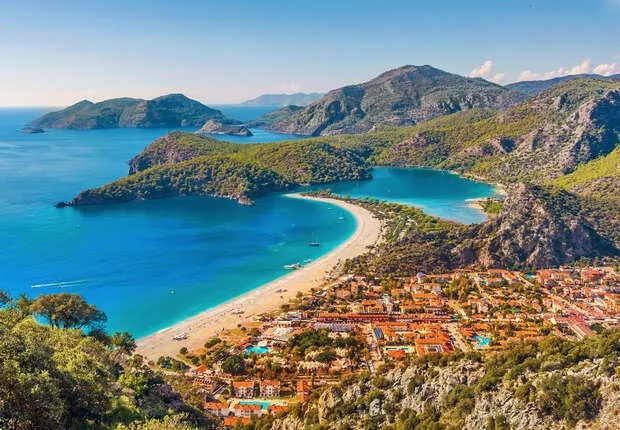
Imagine mountains blending with the Mediterranean—this is the essence of Turkey’s beautiful places. Ölüdeniz Beach’s Blue Lagoon seems plucked from a postcard. Its sheltered bay holds water so clear, colors shift from turquoise to deep blue as you go further. For an adrenaline rush, paraglide from Babadağ Mountain’s 2,000-meter peak down to the beach.
Ancient cities dot the coast, each with stories to tell. Discover Patara’s 18km sandy beach beside half-buried Roman ruins, Xanthos’s remnants of Lycia’s capital, and Letoon’s three temples honoring Apollo, Artemis, and Leto.
Turkey’s first long-distance trail, the Lycian Way, connects these sites. Hike a portion to uncover hidden coves and stunning views unreachable by car. Walk just a mile or two—you’ll spot quiet beaches and cliffside panoramas most travelers never see.
Cappadocia: Fairy Chimneys, Hot Air Balloons & Ancient Wonders

No surprise this area ranks among Turkey’s famous places, pulling travelers worldwide. Those spiky “fairy chimneys”? Imagine jagged rock towers popping up from valleys—straight out of a storybook. Now, many caves are cozy boutique hotels. Yep, you can crash in a cave—just don’t expect roughing it. Think comfy beds and Wi-Fi instead. For real magic, float over this moonscape at sunrise in a hot-air balloon.
Must-sees:
- Göreme Open-Air Museum—ancient churches chiseled into rocks, colorful frescoes still glowing;
- Uçhisar Castle—highest spot around, with views stretching forever;
- Derinkuyu and Kaymaklı—labyrinths of underground cities where folks lived buried for safety;
Wander valleys to spot hidden chapels, pigeon nests carved into cliffs, and rocks that seem to shift shape daily. Each valley feels distinct: Red Valley blazes at sunset, Rose Valley glows soft pink, Love Valley…well, let’s just say the name’s no accident. Grab boots, pick a trail, and see what’s around the next bend.
Gallipoli & North Aegean: History, Tranquility & Coastal Beauty
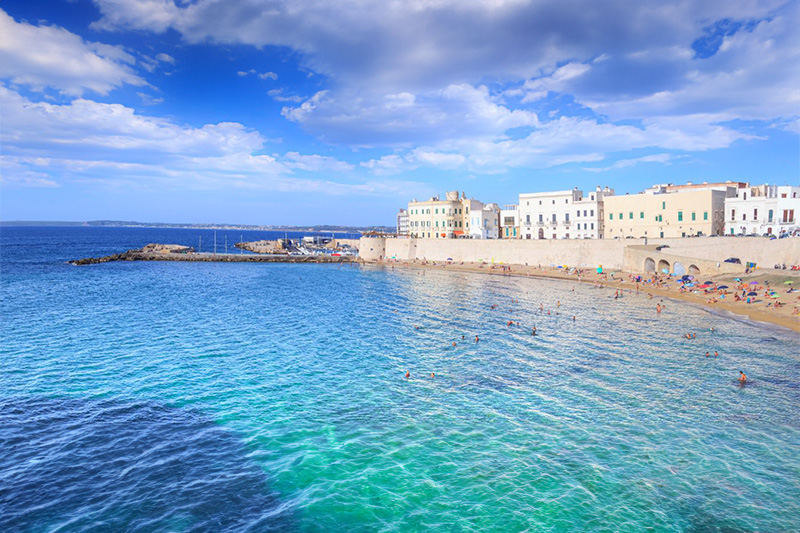
Gallipoli Peninsula isn’t just another historical site. This stretch of land saw fierce World War I battles, leaving a quiet dignity that lingers today. Now, it’s a mix of history and natural beauty—a must-see among places to visit in Turkey for anyone drawn to stories etched into landscapes.
Across Dardanelles Strait sits Troy. Yes, that Troy—the one linked to Helen’s legend and epic clashes. Myth and reality collide here, no textbooks required.
North Aegean coast serves up gems like:
- Bozcaada, with great vineyards and whitewashed villages;
- Assos, where temple ruins sit high above turquoise waves;
- Ayvalık, a maze of cobblestone streets flanked by endless olive trees;
Along the coast, seafood spots serve daily catch grilled with lemon or herbs. Pair it with local olive oil and a glass of regional wine. Trust us, it’s hard to beat flavors this honest.
Far East Türkiye: Untouched Landscapes & Cultural Heritage
Eastern Turkey doesn’t see many international visitors, making it ideal if you’re figuring out where to go in Turkey to avoid crowds. Mount Ararat towers over the landscape—a sharp, snow-covered volcano jutting up from flat plains. Biblical stories claim Noah’s Ark landed here. Believe it or not, the mountain’s sheer size leaves a strong impression.
Lake Van, Turkey’s biggest lake, has unexpected highlights. Akdamar Island holds a 10th-century Armenian church covered in detailed stone carvings. There are beaches with bright blue water—surprising, since it’s nowhere near the sea. Then there’s the Van cat breed, known for odd-colored eyes and liking to swim.
Head south to Mardin, a city spilling down a hillside. Buildings made of golden stone shine at dusk. Its tangled old town packs churches, mosques, and monasteries close together. Wander narrow streets and watch sunlight bounce off stonework, turning everything warm and glowing.
Safranbolu: A Timeless Ottoman Gem
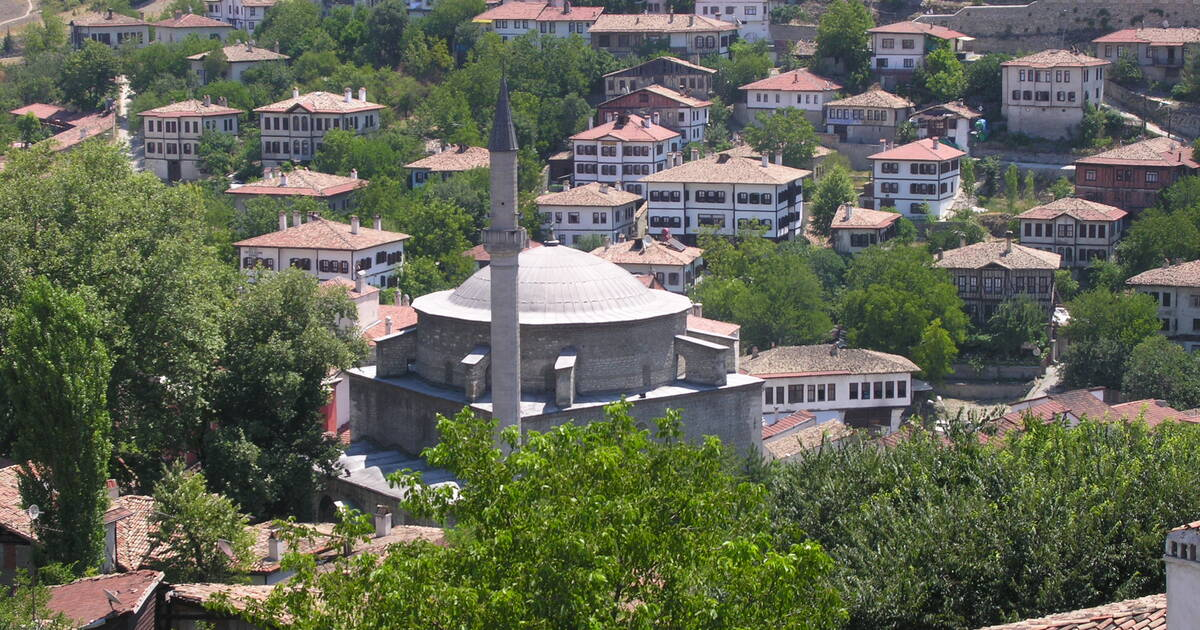
Among Turkey’s famous places, Safranbolu feels like stepping into a living Ottoman-era postcard. Recognized by UNESCO, its streets are lined with hundreds of wooden houses leaning over cobblestones—homes of Silk Road merchants who showed off wealth through intricate carvings and colorful glass windows.
This place isn’t just about buildings. Artisans keep traditions alive here: copper workers hammer pots by hand, leathercrafters use age-old methods, and candy makers stir lokum in copper cauldrons. You won’t see factories here—just skilled hands doing what their grandparents taught them.
Stay overnight in a converted Ottoman house. Wake to prayer calls echoing through streets. Explore markets where locals gather for daily goods—no tourist gimmicks, just everyday life unfolding. It’s quiet, real, and unpolished, like history decided to stick around.
Datça & Bozburun: Secluded Bays & Aegean Charm
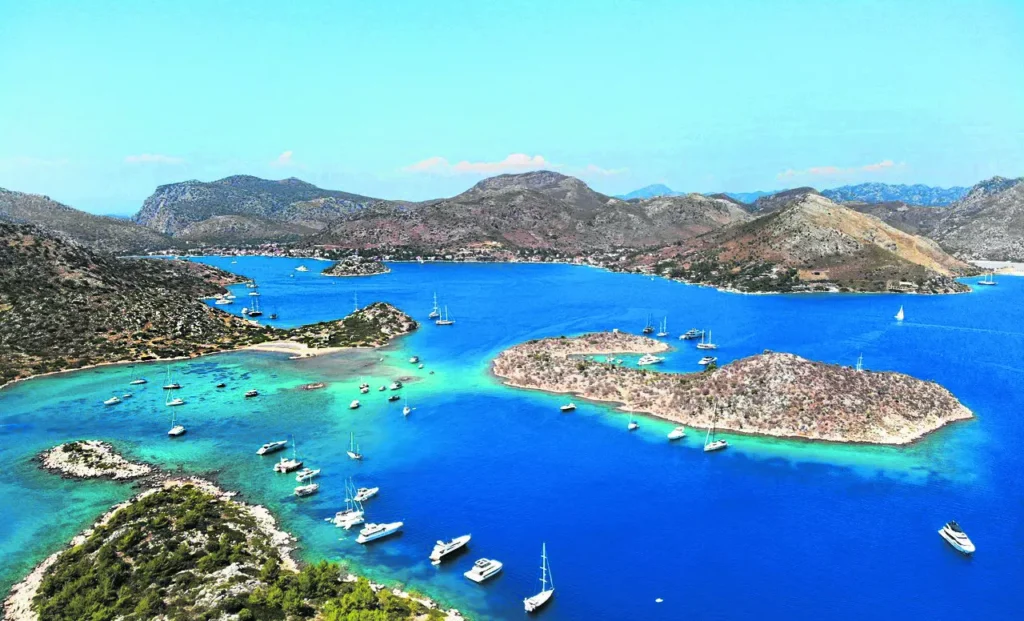
For travelers chasing untouched beauty far from crowded spots, these peninsulas rank among worthy places to go in Turkey.
What’s waiting there:
- Beaches reachable only by boat or rugged dirt paths;
- Villages where daily life centers on olive harvests and honey-making;
- Waters clear enough to spot fish without even diving;
Bozburun stands out for its wooden gulet boats. Head to local shipyards to watch builders craft vessels using century-old methods. Air smells sharp with pine resin as workers fit curved planks—no blueprints, just techniques passed from father to son.
Days here follow nature’s clock. Mornings start with saltwater dips; evenings end with meals at dockside grills. After dark, jasmine mingles with charcoal smoke and seared seafood.
Southeastern Anatolia: Rich History & Mesopotamian Legacy
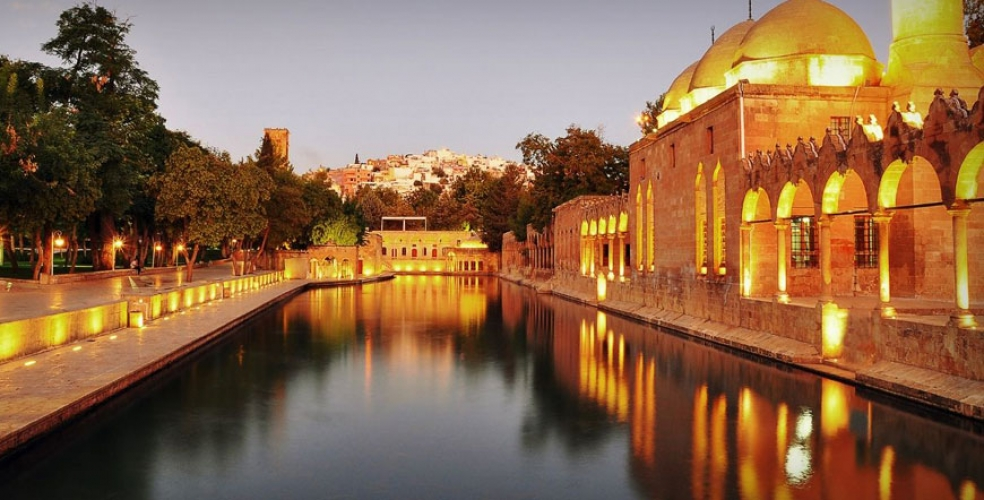
Some places to visit in Turkey have deep historical roots. At Göbeklitepe, huge stone pillars carved 12,000 years ago rewrite what we know about early societies—these structures are 7,000 years older than Stonehenge. This site flips assumptions, showing ritual gatherings might’ve come before farming.
Just a short trip away, Şanlıurfa (locals call it Urfa) mixes ancient stories with modern life. Check out the Pool of Abraham, where sacred carp swim in turquoise waters. Markets here burst with spices, hammered copper bowls, and colorful textiles. Don’t miss street stalls serving Urfa kebabs, smoky and spicy enough to make your eyes water.
Head east to Mardin, a golden-stone city clinging to hills. Syrian-inspired architecture dots its maze-like streets. Churches sit near mosques, and monasteries perch on cliffs. Climb any rooftop, and you’ll see views stretching over flat Mesopotamian lands all the way to Syria’s border.
Food here tastes totally different from Istanbul. Dishes pack heat with local peppers, get tangy with pomegranate syrup, and feature fluffy rice pilaf topped with nuts.
Pamukkale: Türkiye’s Breathtaking Cotton Castle & Thermal Pools
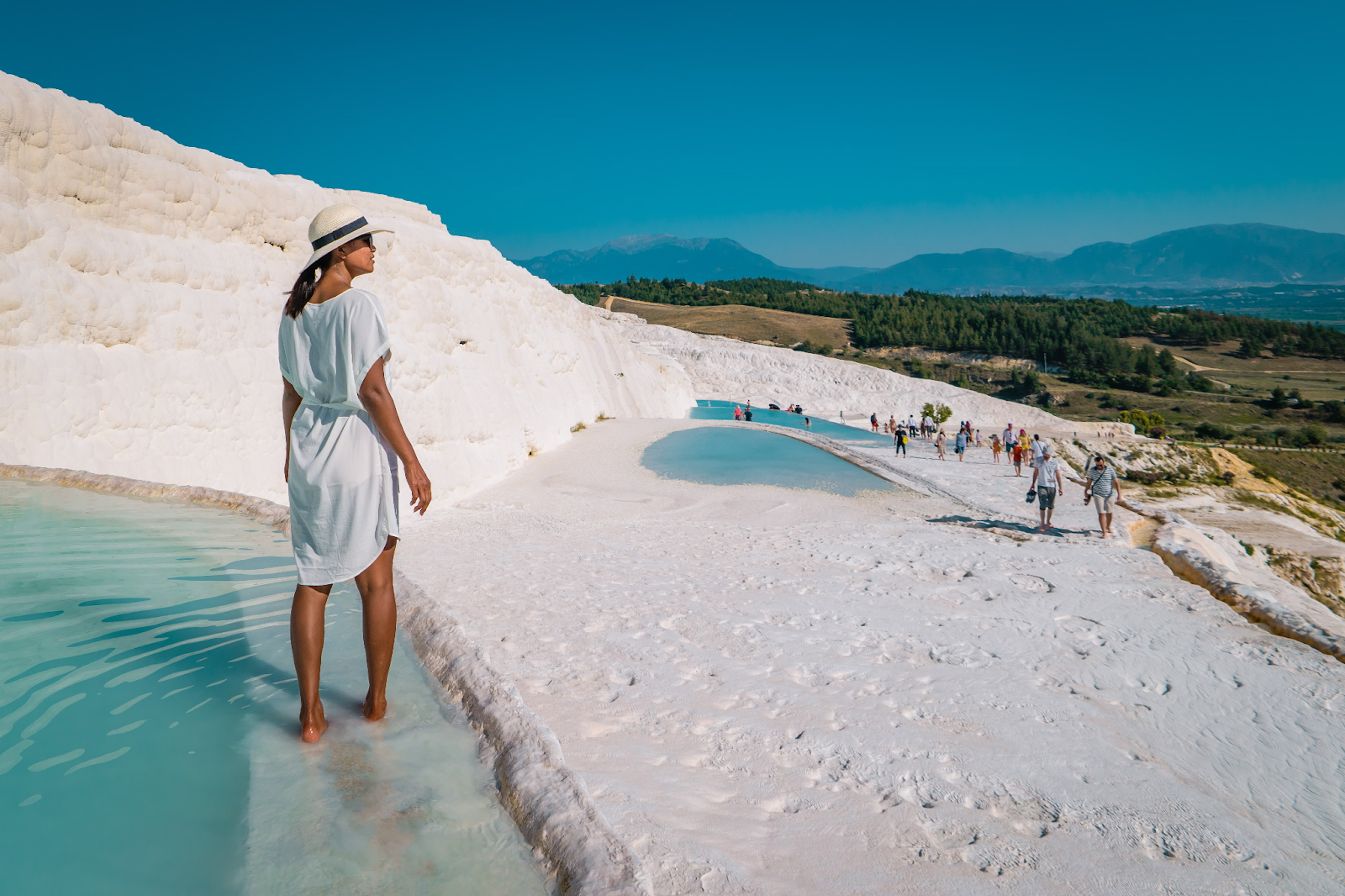
Mineral-rich thermal waters cascade over these terraces, forming rippled white shelves that seem carved from clouds. It’s no surprise this spot makes every list of best places to visit in Turkey for raw natural beauty. Visitors wander through shallow pools, soaking in warm water locals believe eases ailments—from heart issues to irritated skin.
Perched right above sits Hierapolis, an ancient spa city built by Romans and Greeks:
- A sprawling necropolis holds sarcophagi showing varied burial styles;
- A theater, still intact, frames panoramic valley views;
- The Plutonium cave, once feared as a gateway to Hades;
Don’t miss Cleopatra’s Pool. Float among submerged marble columns in fizzy spring water—legend says the queen bathed here, though proof is scarce.
At dusk, the terraces glow amber and rose. Crowds fade. Quiet settles in. Photos and words can’t do it justice—some spots just demand to be felt, not described.
FAQ
What places to visit in Turkey for hiking?
The Kaçkar Mountains in the Eastern Black Sea region feature Alpine-like trails with meadows and traditional villages. The Lycian Way along the Turquoise Coast connects ancient ruins like Patara and Xanthos, offering cliffside panoramas and secluded beaches.
Do Turkey’s places to visit offer adventures?
Paraglide from Babadağ Mountain to Ölüdeniz Beach, kayak the Blue Lagoon, or hike sections of the Lycian Way to discover hidden coves and Roman ruins.
What local dishes and culinary traditions should I try?
- Urfa kebabs (spicy, smoky grilled meat in Şanlıurfa).
- Cornbread and local cheeses in the Kaçkar Mountains.
- Fresh seafood with olive oil in North Aegean villages.
- Lokum (Turkish delight) from Safranbolu’s artisans.
- Sip strong black tea in tulip glasses at Eastern Black Sea çay shacks.
What UNESCO World Heritage Sites Türkiye has?
Key sites include:
- Safranbolu (Ottoman-era wooden houses).
- Göreme Open-Air Museum (rock-cut churches with frescoes).
- Hierapolis-Pamukkale (Roman thermal pools and terraces).
- Troy (legendary ancient city).
What lesser-known regions in Turkey are worth exploring?
- Far East Türkiye: Mount Ararat, Lake Van’s Akdamar Island, and Mardin’s golden-stone architecture.
- Hemşin Valley: Stone bridges and hidden churches.
- Datça & Bozburun: Secluded bays and traditional gulet boatyards.
Do I need a visa to visit Turkey?
Most travelers require an e-Visa, which can be obtained online before arrival. Check Turkey’s official e-Visa portal for your country’s requirements. Some nationalities (e.g., EU citizens) can enter visa-free for short stays.
What’s the best way to travel between cities in Turkey?
Domestic flights are fast and affordable (e.g., Istanbul to Cappadocia). For scenic routes, use intercity buses like Metro Turizm or Pamukkale Turizm. Trains are slower but offer unique journeys, like the Doğu Ekspresi (Eastern Express) to Kars.
Are there cultural etiquette tips I should know?
- Remove shoes when entering homes or mosques.
- Dress modestly in religious sites (cover shoulders/knees).
- Avoid public displays of affection in conservative areas.
- Always accept tea if offered—it’s a sign of hospitality.
What festivals or events should I plan around?
- Istanbul Biennial (Sept–Nov, odd years): Contemporary art showcase.
- Whirling Dervishes Festival (Dec 17 in Konya): Celebrates Rumi’s legacy.
- Camel Wrestling Festivals (Dec–Mar in Aegean villages): Quirky local tradition.
What’s the best time to visit Turkey’s coastal regions?
April–June and September–October offer warm weather with fewer crowds. July–August is peak season (hot and busy). The Turquoise Coast stays swimmable into late October.
Summing Up
From Istanbul’s bustling bazaars to Pamukkale’s otherworldly terraces, Turkey offers an astonishing diversity of experiences. Whether you seek ancient history, natural wonders, culinary adventures, or simply perfect beaches, Turkey’s places to visit are virtually endless. Each region tells its own story, inviting travelers to become part of a narrative thousands of years in the making.
Perhaps the greatest joy lies in discovering your own favorite corner of this magnificent country. The best places to visit in Turkey might be the famous sites that grace postcards—or they might be the quiet moments: a perfect Turkish coffee shared with a shopkeeper, a sunset swim in a secluded cove, or the call to prayer echoing across ancient stones. Turkey rewards those who travel with open hearts and curious minds.

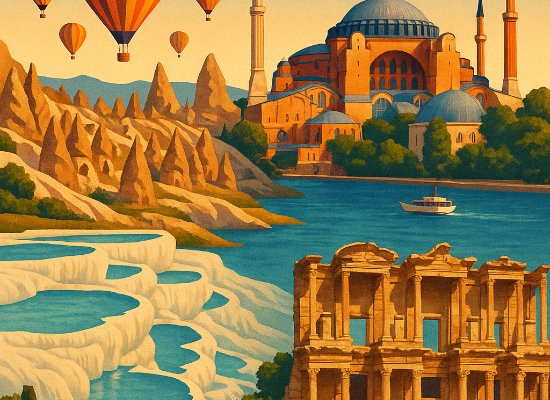




0 Comments